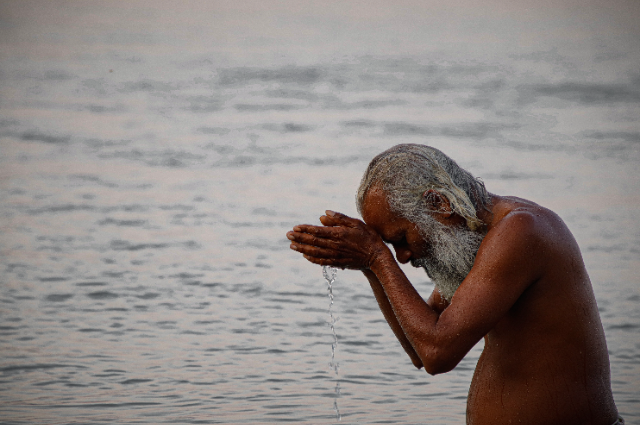
In the vibrant colour of Indian culture and spirituality, the Ganga holds a unique and revered position. The Ganga, or Ganges River, is not merely a waterway; it is considered a sacred entity that bestows spiritual purity upon those who immerse themselves in its waters. The ritualistic bathing in the Ganga, known as "Ganga Snan," is a tradition embedded in the hearts of millions of Indians. The alignment of this sacred ritual with the full moon adds an extra layer of significance and mystique to the already profound act.
Historical and Religious Context:
The Ganga has been revered in Indian scriptures and mythology for centuries. According to Hindu beliefs, the river descended from the heavens to earth through Lord Shiva's hair, making it divine and purifying. Bathing in the Ganga is thought to cleanse one of sins and pave the way for salvation. The convergence of Ganga Snan with a full moon amplifies its importance, as the full moon is considered an auspicious time in various Hindu traditions.
Astrological Significance:
The alignment of the full moon with Ganga Snan is not a mere coincidence; it holds astrological significance in Hinduism. The full moon, or 'Purnima,' is associated with positive energy, heightened spirituality, and the inflow of cosmic energies. This celestial alignment is believed to enhance the spiritual impact of the Ganga Snan, making it an opportune time for seekers to connect with their inner selves and the divine.
Cultural Celebrations:
Ganga Snan during a full moon is not just a personal ritual; it transforms into a grand cultural celebration. Pilgrims and devotees from various parts of India converge on the banks of the Ganga, creating a vibrant tapestry of faith and devotion. The atmosphere is charged with religious fervor as people come together to partake in this collective spiritual experience. Temples along the riverbanks resonate with prayers, chants, and rituals, create an ethereal ambience.
Purification of Mind and Body:
The full moon's influence on Ganga Snan is believed to enhance the purification process. As devotees immerse themselves in the sacred waters under the glow of the full moon, it is thought that not only the body but also the mind and soul undergo a profound cleansing. This act of purifying the inner self aligns with the holistic approach to spirituality in Hinduism.
Connection to Nature:
The synergy between the full moon and Ganga Snan also underscores the interconnectedness of nature and spirituality in Indian culture. The moon's gravitational pull is known to affect tides, and believers feel that this celestial phenomenon enhances the spiritual vibrations of the Ganga during the full moon. The alignment of natural cycles with religious practices reinforces the idea of harmony between the earthly and celestial realms.
Enhanced Blessings and Auspicious Beginnings:
Full moon Ganga Snan is considered an auspicious time for new beginnings and seeking divine blessings. Devotees believe that any prayers, rituals, or vows undertaken during this time carry added significance and are more likely to be fulfilled. It is a time for reflection, gratitude, and setting intentions for the future, making it a spiritually charged period for personal growth.
Conclusion:
The convergence of the full moon with the sacred ritual of Ganga Snan creates a potent blend of spirituality, culture, and nature in the rich tapestry of Indian traditions. This celestial alignment elevates the significance of an already revered practice, offering devotees a unique opportunity to connect with the divine, purify their souls, and partake in a collective celebration of faith. The full moon on Ganga Snan day serves as a reminder of the profound interplay between the earthly and celestial realms, symbolizing the eternal dance of nature and spirituality in the heart of India.
